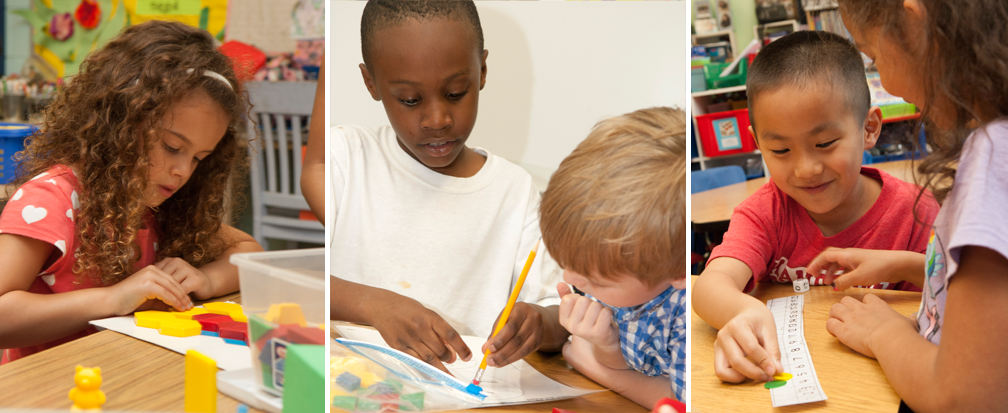Learning Multiple Methods for Any Mathematical Operation: Algorithms
Everyday Mathematics teaches students how to perform computations using application-based problem solving. The Everyday Mathematics curriculum provides students with a variety of dependable and understandable methods of computation — also called “algorithms.” These methods include traditional algorithms (often taught to students’ parents in school), as well as alternative algorithms that many students find easier to learn and use with greater accuracy.
Becoming Active Problem Solvers through Algorithm Invention
Using Everyday Mathematics, students are encouraged to be active, independent problem solvers. This process begins by developing students' background skills and knowledge in three areas:
- basic fact skills,
- place value skills, and
- an understanding of the meanings of operations.
Once these background skills are in place, and before students are taught standard algorithms, they are encouraged to invent and share their own ways for doing operations. This approach requires students to focus on the meaning of the operation. They learn to think and use their common sense, as well as new skills and knowledge — building on the conceptual understanding they were first taught. Quite often, students come up with their own unique algorithms that prove that they “get it.”
Giving students the opportunity to invent and share their own operational procedures has the following benefits:
- Children are more motivated to solve problems when they are allowed to come up with their own strategy instead of just following a rote procedure.
- Children with different learning styles are given problem-solving options. They may choose to use manipulatives, drawings, oral and written words, or symbols to represent and solve problems.
- Children become adept at changing problems into easy-to-solve equivalent problems. For example, 30 – 17 is equivalent to 30 – 10 – 7.
- When children explain and discuss their own algorithms with other children, they internalize what the operations mean and learn from each other. Children's discussions also provide valuable information that can help teachers assess the development of their numerical thinking.
- Children develop persistence and confidence in dealing with challenging problems.
After students have had many opportunities to experiment with their own computational strategies, they are introduced to several algorithms for each operation.
Traditional, Alternative & Focus Algorithms
For decades, all American school children have been taught one standard procedure for each of the four basic arithmetic operations. These "standard" algorithms, such as the regrouping ("borrowing") algorithm for multidigit subtraction and the long division algorithm, are not the only way to perform these operations. There are many alternative algorithms taught in other countries. Research has shown that teaching the standard U.S. algorithms fails with large numbers of children, and that alternative algorithms are often easier for children to understand and learn. For this reason, Everyday Mathematics introduces children to a variety of procedures as well as the standard U.S. algorithms.
The program designates one alternative algorithm for each operation as a “focus” algorithm. Students are asked to try the focus algorithm first, but may then elect to experiment with other alternatives. Students are encouraged to experiment with various algorithms and to become proficient with at least one for each operation.
Below are some of the most popular alternative algorithms including the focus algorithms:
- Partial-sums addition
- Column-addition
- Trade-first subtraction
- Counting-up subtraction
- Partial-differences subtraction
- Partial-products multiplication
- Lattice multiplication
Learn More
Visit our Algorithms / Computation page to learn more about the research behind the algorithms and to see worked examples and practice exercises.
Developing Proficiency
Multidigit addition and subtraction algorithms are formally introduced in second grade, and most children should be proficient in the use of at least one algorithm for each operation by the beginning of fourth grade. Multiplication algorithms are formally introduced in third grade, with proficiency expected by the end of the year. Division algorithms are introduced in fourth grade, with proficiency expected in fifth grade.



